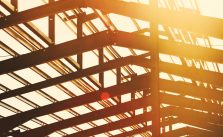How to Choose the Right Kind of Lumber for Your Project

Whether you’re working inside or out, picking the right lumber for your project is key. The wrong lumber costs you time and poor quality lumber will cost you money. Below are several factors to consider before you head to the home improvement store.
Choose A Pattern With A Cut-List
If you don’t have a lot of experience with lumber, make sure you pick a set of instructions that includes a cut-list and detailed instructions. Some DIYers are surprised when they discover that a 2 x 4 is really a 1.5 x 3.5. Lumber is referred to by a nominal size, but the actual dimensions are different. Once you’re accustomed to the difference, you can start to modify patterns or create your own.
Indoor or Outdoor?
Outdoor projects require water resistant, pest resistant lumber. You can either buy this lumber in the form of
- redwood
- Western red cedar, or
- cypress
If you plan to paint or stain any of this lumber, be aware that you will need to let it air or bleed for a time before you coat it with anything. While this lumber is rot and pest resistant, it can be expensive.
Another option is to purchase pressure treated lumber. This lumber can also bleed or feel moist after your project is done. Be sure to let the item sit outside until it’s dry to the touch before you paint or seal it.
As you make your cuts and put the piece together, be sure that you pre-drill the holes for screws. This lumber can be quite heavy and bulky. You don’t want any splitting of the lumber as you put the project together or it may pull apart in the years to come.
Particle Lumber, Plywood or Planking?
Depending on your project goals, you may wind up using a variety of lumbers. For example, if you’re building a custom shelf unit with space for electronics and plan to cover it with a laminate, particle board is a great choice for the casing.
If you’d like to paint the exterior of the casing, consider MDF. This product is similar to particle board but is made of much finer fibers and takes paint very well. Be aware that MDF is heavier than plywood. You may want to build your cabinet in the room where you will use it!
Both MDF and particle board are made of wood waste bound with glue. They’re quite cost effective and are often used in cabinet making.
You will need dimensional lumber to true up and stabilize the shape of the exterior box. For the shelving, plywood is a great choice as it holds its shape and doesn’t sag over time. In addition, once you treat the front edge of the shelf with a laminate tape to simulate woodgrain, you can stain or paint the whole shelf.
Plywood is made from sheets of wood veneer, clued together in a cross-hatch pattern so the wood grain runs both top to bottom and side to side. Plywood is extremely durable and doesn’t tend to warp or sag.
Planking is simply boards of a particular dimension. Softwood and hardwood are both available in planks. These boards can easily be stained or painted and make great shelves. However, users should be aware that planks can sag or warp over time particularly if they’re stored in a damp space.
Final Thoughts
When you start working with lumber, look for kits or instructions that include a detailed cutting list and a finite number of lumber types and formats. Once you have some skills built up, you can start experimenting with new lumbers, new formats and new designs.

















